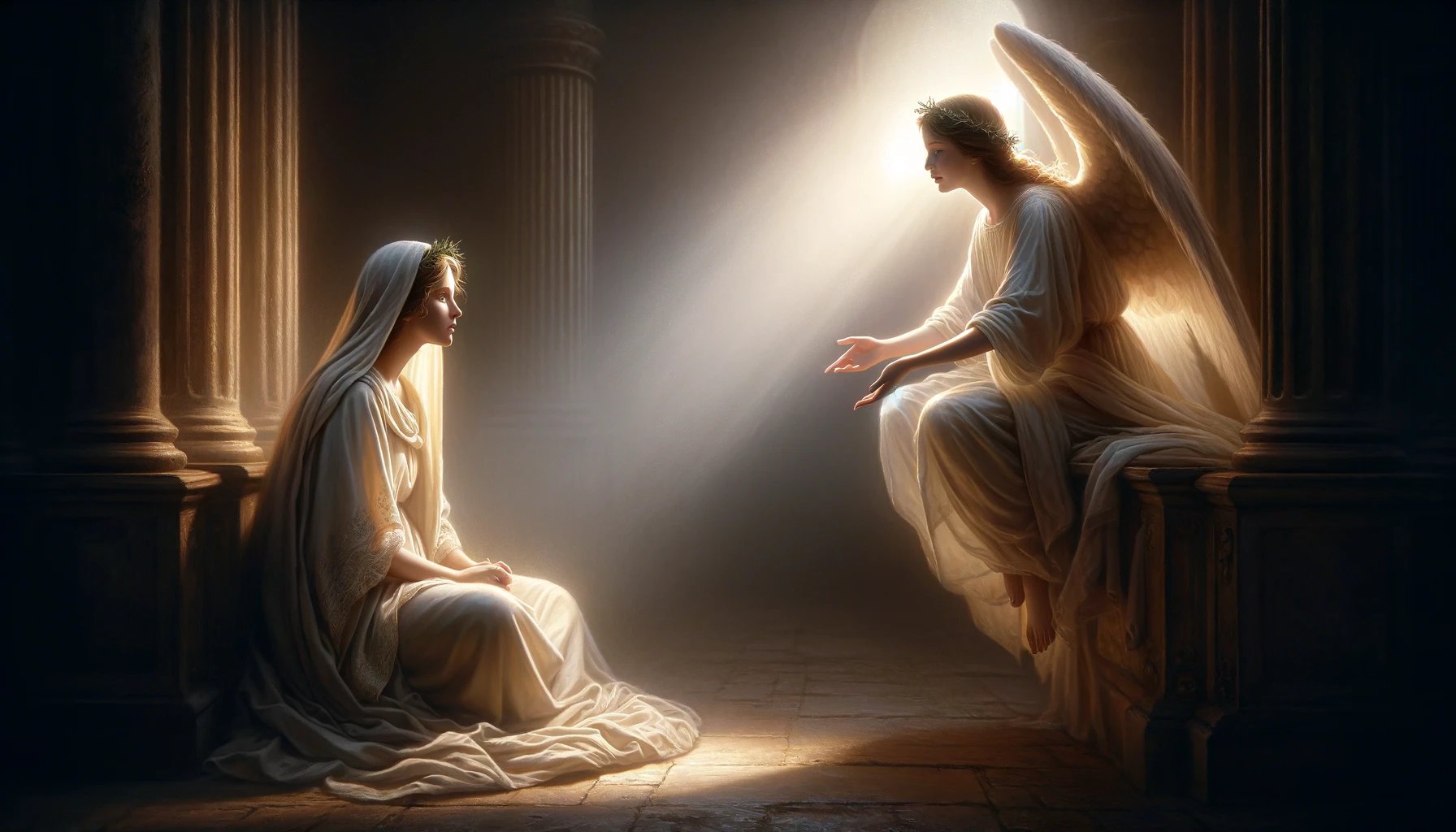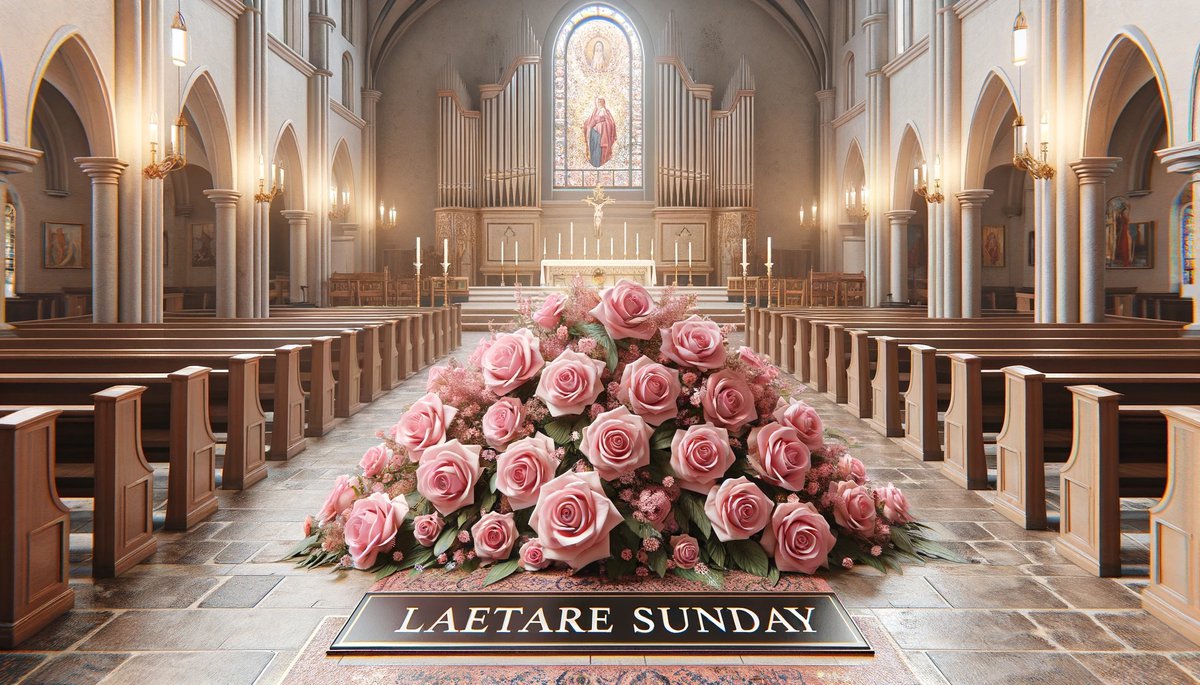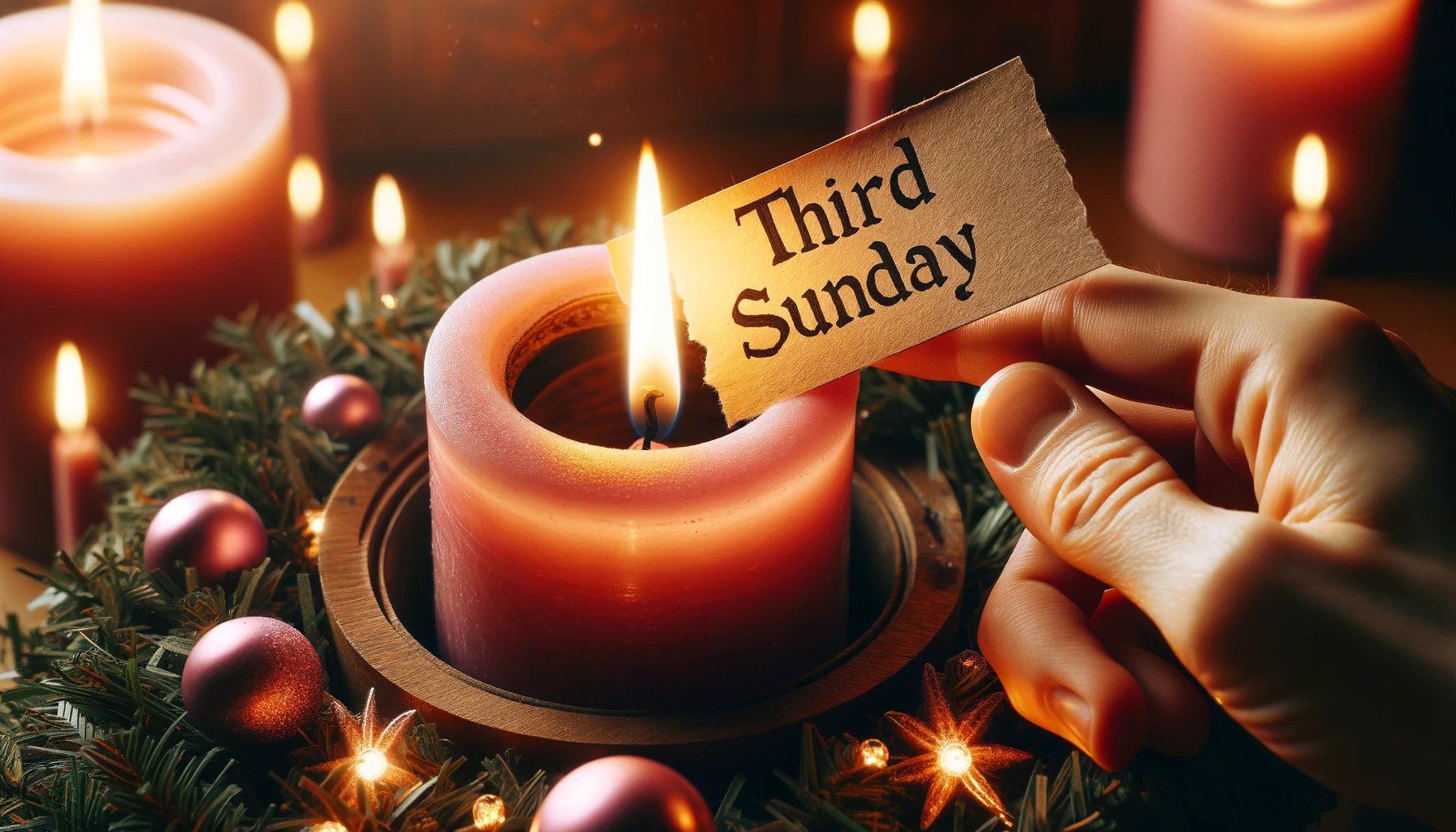Home>Special Themes>When Is The Fourth Week Of Advent


Special Themes
When Is The Fourth Week Of Advent
Published: February 13, 2024
Ericka Andersen, an editor at Christian.net, expertly merges digital strategy with content creation, focusing on faith and societal issues. Her communication skills enhance the platform's engaging narratives, fostering meaningful dialogue on belief's impact on society.
Discover the significance and traditions of the fourth week of Advent, a time of reflection and anticipation of the special themes of the season. Explore the customs and observances that make this week unique.
(Many of the links in this article redirect to a specific reviewed product. Your purchase of these products through affiliate links helps to generate commission for Christian.net, at no extra cost. Learn more)
Table of Contents
Introduction
The fourth week of Advent is a time of joyful anticipation and reflection for Christians around the world. As the culmination of the Advent season, this week holds special significance as it leads up to the celebration of Christmas. During this period, individuals and communities engage in various traditions and customs that symbolize hope, love, joy, and peace.
The Advent season, which typically begins on the fourth Sunday before Christmas, marks the start of the liturgical year in many Christian traditions. It serves as a time of preparation and expectation for the birth of Jesus Christ. Throughout the preceding weeks, believers focus on the themes of hope, love, joy, and peace, lighting a candle on the Advent wreath to represent each of these aspects.
As the fourth and final week of Advent, this period holds a sense of culmination and fulfillment. It is a time for believers to reflect on the journey of anticipation and spiritual preparation that has led them to this point. The symbolism of the fourth candle, often referred to as the "Angel's Candle" or the "Candle of Peace," underscores the message of peace and the imminent arrival of the Prince of Peace.
During this week, the atmosphere is imbued with a sense of excitement and reverence as individuals and families eagerly await the celebration of Christ's birth. The customs and traditions associated with the fourth week of Advent vary across different cultures and denominations, each adding a unique richness to the overall observance of this sacred time.
In the following sections, we will delve deeper into the significance of the fourth week of Advent, exploring the traditions and customs that characterize this period and examining how it is celebrated in diverse cultural contexts. By gaining a deeper understanding of the essence of the fourth week of Advent, we can appreciate the profound spiritual meaning it holds for millions of people worldwide.
Read more: When Is The First Week Of Advent
Understanding the Advent Season
The Advent season, derived from the Latin word "adventus," meaning "coming" or "arrival," is a time of spiritual preparation and anticipation in the Christian calendar. It typically spans the four Sundays leading up to Christmas Day, serving as a period of reflection, hope, and expectation for the birth of Jesus Christ. This sacred season not only commemorates the historical event of Christ's nativity but also symbolizes the anticipation of His second coming.
The Advent season is characterized by the lighting of candles on an Advent wreath, with each candle representing a specific theme. The first candle, often purple or blue, symbolizes hope and is known as the "Prophet's Candle" or the "Candle of Hope." The second candle, also purple or blue, represents love and is referred to as the "Bethlehem Candle" or the "Candle of Love." The third candle, typically pink or rose, signifies joy and is called the "Shepherd's Candle" or the "Candle of Joy." Finally, the fourth candle, usually purple or blue, represents peace and is known as the "Angel's Candle" or the "Candle of Peace."
Throughout the Advent season, believers engage in various spiritual practices, including prayer, scripture reading, and acts of kindness and charity. These activities are designed to foster a sense of spiritual readiness and anticipation for the celebration of Christ's birth. The Advent season also serves as a time for believers to reflect on the broader themes of hope, love, joy, and peace, which are central to the Christian faith.
In addition to its spiritual significance, the Advent season holds a cultural and communal importance for many Christian communities. It provides an opportunity for individuals and families to come together in worship, fellowship, and shared traditions. The observance of Advent often includes special church services, musical performances, and communal gatherings that foster a sense of unity and anticipation among believers.
Overall, the Advent season serves as a meaningful and transformative period for Christians worldwide. It invites believers to embrace the virtues of hope, love, joy, and peace while preparing their hearts and minds for the celebration of Christ's birth. Through its rich symbolism and spiritual practices, the Advent season continues to inspire and uplift individuals, fostering a sense of anticipation and renewal as the Christmas celebration draws near.
The Significance of the Fourth Week of Advent
The fourth week of Advent holds profound significance as it represents the culmination of the season's themes and the imminent arrival of Christmas. As the final stretch of the Advent journey, this week encapsulates the essence of hope, love, joy, and peace, symbolized by the lighting of the fourth candle on the Advent wreath. This candle, often referred to as the "Angel's Candle" or the "Candle of Peace," serves as a poignant reminder of the peace that Christ's birth brings to the world.
The lighting of the fourth candle signifies the anticipation of the fulfillment of God's promises and the imminent arrival of the Savior. It encapsulates the collective longing for peace and the realization of divine grace. This symbolic act not only marks the approaching celebration of Christ's birth but also serves as a powerful affirmation of the enduring hope and faith that sustain believers throughout the Advent season.
The fourth week of Advent also serves as a time for introspection and spiritual contemplation. It prompts individuals to reflect on the journey of anticipation and preparation that has unfolded over the preceding weeks. It offers a moment for believers to pause and consider the profound significance of Christ's imminent arrival, inviting them to embrace the peace and joy that His birth brings to the world.
Furthermore, the fourth week of Advent serves as a bridge between the anticipation of Christ's birth and the joyous celebration of Christmas. It encapsulates the transition from longing to fulfillment, from expectation to jubilation. This period of transition holds a unique spiritual significance, as it represents the culmination of the Advent season's themes and the dawning of a new era marked by the presence of the Christ child.
In essence, the fourth week of Advent serves as a poignant reminder of the transformative power of faith, hope, and love. It encapsulates the culmination of the Advent journey, infusing believers with a sense of anticipation, reverence, and gratitude. As the final week before Christmas, it symbolizes the imminent fulfillment of God's promises and the arrival of the long-awaited Messiah, ushering in a season of joy, peace, and spiritual renewal.
The significance of the fourth week of Advent extends beyond its position on the calendar; it embodies the timeless message of hope, love, joy, and peace that resonates deeply with believers across generations and cultures. It serves as a testament to the enduring power of faith and the profound impact of Christ's birth on the human experience.
Traditions and Customs during the Fourth Week of Advent
The fourth week of Advent is marked by a rich tapestry of traditions and customs that reflect the profound spiritual significance of this sacred period. As the final stretch of the Advent season, this week is characterized by a sense of joyful anticipation and reverence, with various customs and practices adding depth and meaning to the observance of this pivotal time.
One of the central customs during the fourth week of Advent is the lighting of the fourth candle on the Advent wreath, often referred to as the "Angel's Candle" or the "Candle of Peace." This symbolic act represents the imminent arrival of Christ and the peace that His birth brings to the world. Families and communities gather around the Advent wreath, often in the evening, to participate in this ritual, fostering a sense of unity and spiritual connection as they collectively anticipate the celebration of Christmas.
In addition to the lighting of the fourth candle, the fourth week of Advent is often marked by special church services and liturgical observances. Many Christian denominations hold meaningful ceremonies and worship gatherings that center on the themes of peace, hope, and the imminent arrival of the Savior. These services provide believers with an opportunity for communal reflection and spiritual renewal, deepening their connection to the core values of the Advent season.
Another cherished tradition during the fourth week of Advent is the incorporation of music and hymns that capture the essence of peace and anticipation. Churches and communities often feature special musical performances and choral presentations that resonate with the themes of hope, love, joy, and peace. These musical expressions serve to uplift and inspire individuals, fostering a sense of spiritual contemplation and reverence as they prepare to welcome the birth of Christ.
Furthermore, the fourth week of Advent often includes acts of charity and goodwill, reflecting the spirit of peace and compassion embodied by the Christmas story. Many individuals and organizations engage in outreach efforts, charitable initiatives, and acts of kindness that seek to bring comfort and joy to those in need. This emphasis on generosity and compassion underscores the universal message of peace and goodwill that lies at the heart of the Advent season.
Overall, the traditions and customs during the fourth week of Advent serve to deepen the spiritual significance of this sacred period, fostering a sense of unity, anticipation, and reverence among believers. Through the lighting of the fourth candle, special church services, musical expressions, and acts of charity, individuals and communities embrace the timeless message of peace and hope, preparing their hearts to celebrate the birth of Christ with joy and gratitude.
Celebrating the Fourth Week of Advent in Different Cultures
The celebration of the fourth week of Advent varies across different cultures, each imbuing this sacred period with unique customs, traditions, and expressions of faith. From vibrant processions to elaborate musical performances, the observance of the fourth week of Advent reflects the diverse tapestry of global Christian traditions, each adding a rich layer of cultural significance to this pivotal time.
In many Latin American countries, the fourth week of Advent is marked by colorful and lively processions known as "Las Posadas." This tradition reenacts Mary and Joseph's journey to Bethlehem and their search for lodging, culminating in a joyful celebration upon finding shelter. The community comes together to participate in these processions, often accompanied by music, prayers, and festive gatherings, creating a vibrant and communal expression of hope and anticipation.
In Germany and other European countries, the fourth week of Advent is celebrated with the tradition of the "Christkindlmarkt" or Christmas market. These markets, adorned with twinkling lights and festive decorations, offer a delightful array of seasonal treats, handcrafted gifts, and traditional delicacies. The atmosphere is infused with the spirit of joy and camaraderie as families and friends gather to partake in this cherished tradition, fostering a sense of unity and anticipation as Christmas draws near.
In Ethiopia, the observance of the fourth week of Advent is marked by the unique tradition of "Ganna," a joyful and colorful celebration that includes traditional music, dance, and feasting. This cultural expression of the Advent season reflects the vibrant heritage and deep-rooted faith of the Ethiopian Orthodox Church, infusing the observance with a distinct blend of spiritual reverence and cultural exuberance.
In the Philippines, the fourth week of Advent is celebrated with the tradition of "Simbang Gabi," a series of nine pre-dawn Masses leading up to Christmas Eve. This cherished custom brings together families and communities in a spirit of devotion and unity, as believers gather to participate in these early morning liturgies, followed by festive gatherings and traditional Filipino delicacies.
In each of these cultural contexts, the celebration of the fourth week of Advent serves as a testament to the universal themes of hope, love, joy, and peace that transcend geographical boundaries and unite believers around the world. Through diverse customs and traditions, individuals and communities honor the profound significance of this sacred period, embracing the timeless message of Christ's imminent arrival with reverence, joy, and cultural richness.
Read more: What Are The 4 Advent Weeks?
Conclusion
The fourth week of Advent stands as a poignant culmination of the season's themes, encapsulating the collective anticipation and spiritual preparation for the celebration of Christ's birth. As the final stretch of the Advent journey, this week holds profound significance, symbolized by the lighting of the fourth candle on the Advent wreath, representing peace and the imminent arrival of the Prince of Peace.
Throughout this sacred period, individuals and communities engage in a tapestry of traditions and customs that reflect the universal themes of hope, love, joy, and peace. From the lighting of the fourth candle to special church services, musical expressions, acts of charity, and diverse cultural celebrations, the observance of the fourth week of Advent resonates deeply with believers across the globe, fostering a sense of unity, anticipation, and reverence.
The essence of the fourth week of Advent extends beyond its position on the calendar; it embodies the timeless message of hope, love, joy, and peace that resonates deeply with believers across generations and cultures. It serves as a testament to the enduring power of faith and the profound impact of Christ's birth on the human experience.
As we reflect on the significance of the fourth week of Advent, we are reminded of the transformative power of faith and the enduring message of peace and goodwill that lie at the heart of the Christmas story. This sacred period invites us to embrace the virtues of hope, love, joy, and peace, preparing our hearts to celebrate the birth of Christ with joy, gratitude, and a renewed sense of spiritual purpose.
In the midst of the hustle and bustle of the holiday season, the observance of the fourth week of Advent offers a profound opportunity for introspection, spiritual contemplation, and communal celebration. It serves as a poignant reminder of the enduring hope and faith that sustain us, infusing our lives with a sense of anticipation, reverence, and gratitude as we prepare to welcome the birth of Christ.
As we journey through the fourth week of Advent and approach the joyous celebration of Christmas, may we carry with us the timeless message of hope, love, joy, and peace, embracing the transformative power of faith and the enduring promise of Christ's birth. In doing so, we honor the sacred essence of the Advent season and carry its profound significance into our lives and communities, fostering a spirit of unity, compassion, and spiritual renewal.














